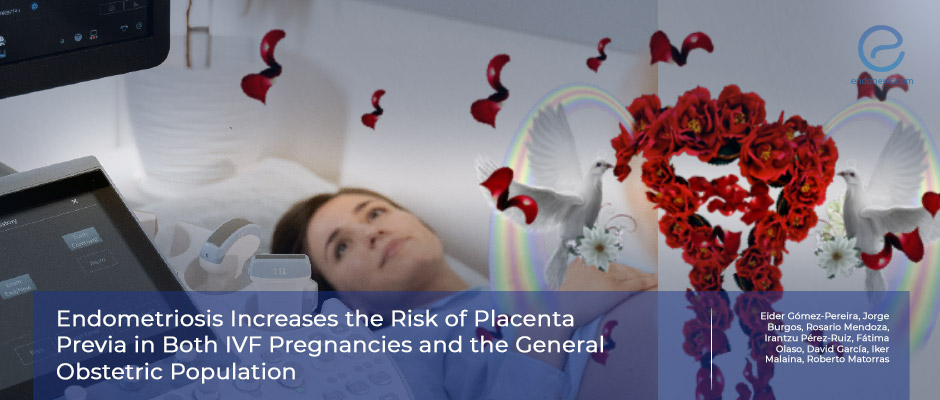Placenta Previa More Common Among Pregnant Women With Endometriosis
Sep 30, 2022
In vitro fertilization seems to have no effect on this finding.
Key Points
Highlights:
- Pregnant women with endometriosis are more likely to have placenta previa.
- If they undergo a Cesarean section, the operation is likely to take longer and the women are likely to stay in the hospital for longer.
Importance:
This knowledge can help ensure that pregnant women with endometriosis receive the obstetric care they need.
What's done here:
Researchers analyzed data from 2 groups of women.
Key results:
- The rate of placenta previa is higher among pregnant women with endometriosis.
- This is the case independently of whether they became pregnant using IVF, their age, previous pregnancies, and the number of babies in the pregnancy.
- Women with placenta previa who had endometriosis and underwent a Cesarean section had a longer operation time and hospital stay compared to those without the disease.
Limitations:
This study does not provide any information about whether it is endometriosis itself that increases the risk of placenta previa or other risk factors leading to the development of endometriosis, or treatments used to treat endometriosis.
Lay Summary
Endometriosis is associated with a higher risk of placenta previa, according to a new study published in the scientific journal Reproductive Sciences. This is the case whether the women became pregnant following in vitro fertilization (IVF). Moreover, for women with endometriosis who have placenta previa and Cesarean section, the average time of the operation and time spent in the hospital is higher compared to women without endometriosis.
This finding is important because it can ensure pregnant women with endometriosis are followed as necessary and receive the care they need.
Placenta previa is a complication during pregnancy where the placenta covers the opening of the womb. If the problem does not go away on its own, the baby may need to be delivered by Cesarean section. It is therefore important to follow the situation closely.
In order to investigate whether there is a relationship between placenta previa and endometriosis, a team of researchers from Spain led by Dr. Roberto Matorras, conducted a study using data from two different groups of women. The first group consisted of women who became pregnant with IVF and gave a total of 1,170 births, 246 of which were via Cesarean sections. The second group consisted of 50,298 deliveries of which 7,045 were Cesarean sections, the so-called general obstetric population.
The researchers reported that in women who became pregnant using IVF, the rate of placenta previa was 1.71% among all deliveries and 8.13% among Cesarean sections. In the general obstetric population, on the other hand, the rate was 0.34% among all deliveries and 2.41% among the Cesarean sections.
When they concentrated on women with endometriosis, the researchers found that for women who became pregnant using IVF and had a Cesarean section, the rate of Placenta previa was 20% while it was 5.47% in women without the disease. Considering all IVF deliveries, the rate of placenta previa was 6.43% in women with endometriosis and 1.07% in women without the disease.
In the general obstetric population who had a Cesarean section, the rate of placenta previa was 9.61% in women with endometriosis and 2.19% in women without the disease. Considering all deliveries, the rate of placenta previa was 1.35% in women with endometriosis and 0.3% in women without. The differences remained when the data were adjusted in terms of the age of the women, IVF, having twins or more babies at once, and previous deliveries.
Research Source: https://pubmed.ncbi.nlm.nih.gov/35999442/
placenta previa pregnancy complication IVF obstetric care cesarean endometriosis delivery

